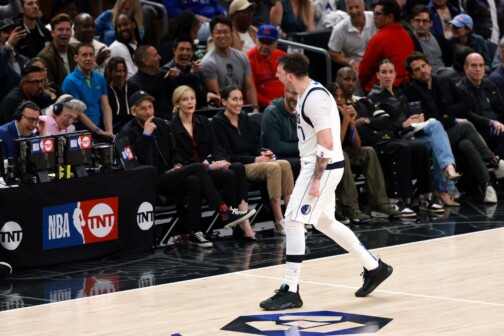If you’re looking for a respite from the summer heat, or if you’ve simply got the office blues- grab a quick bite and -grid the rest of your lunch break browsing through the American Museum of Historical Documents at the Galleria.
Don’t be overwhelmed by the size of the collection or by me price tags on some of the mor significant documents and signatures; there’s a curator on duty to help field ques-tions. Be sure to see the Albert Epstein letter, John Lennon’s signature and a threatening letter written by infamous outlaw jesse James. And you probably thought these kinds of documents could only be found in the Smithsonian.
Collector and AMHD owner Todd Axelrod has a computerized inventory of more than 30,000 documents valued at about $25 million, and he spends much of his time finding and buying new documents- Axelrod’s main office is in Las Vegas. He says he opened the Dallas store be-cause some of his best clients are Texans and because Dallas was one of the cities least affected by the recent recession.
Axelrod says that some of the inventory at the Galleria rejects documents from Texas history, hut sales show that the Dallas branch sells only about , percent more of the Texas items than the Las Vegas loca-
Collecting historical docu-ments isn’t just a blueblood pastime, but he adds that it’s I portant to decide if you’re buyjng a document as a nostalgia piece or as an investment. Both types have a wide price range at his store-from $300 perhaps $80,000. For exam-ple, a movie star photo collage priced at $695 is called nostalgia rnaterial, while a signature by famed aviator Orville Wright might cost $595 and is termed an investment. Nostalgia pieces are less likely to increase in value, whereas investment-grade pieces will almost always accrue value.
If you want to collect for investment purposes, documents signed by famous scientists and U.S. presidents are good choices. Documents by Albert Einstein, Abraham Lincoln, George Washington and John F. Kennedy are in high demand. Since there aren’t too many around, their value rises constantly. Axelrod says he’s personally collecting documents signed by former president Richard Nixon in anticipation that the documents will rapidly increase in value three to four years after Nixon’s death.
Axelrod estimates that just two years ago, the number of people who collected documents was about 2,000. He expects that total to reach 50,000 within 10 years. As a result, he says that many collectors will be demanding some of the same documents; therefore, the value of those documents will increase. “Not everybody is going to be able to own a (Abraham) Lincoln document.”
Beginning collectors should research the types of documents they are interested in for price and quality. Axelrod suggests that beginners buy two or three investment-grade documents instead of four or five documents of average value and interest, and he adds that more than 40 percent of the items in his inventory cost less than $2,000. The document’s frame is a substantial part of the overall cost, since the standards of framing are the same ones followed by the U.S. Library of Congress. The custom-made frames have glass that prevents ultraviolet light from fading the document, and the frames are sealed to prevent aging.
Worried about authenticity? Don’t be. Axelrod and his staff are experts in the business of detecting fakes, so they give clients an unconditional guarantee that their money will be refunded if they buy something that’s not authentic.
Related Articles

D CEO Award Programs
Winners Announced: D CEO’s Financial Executive Awards 2024
Honorees in this year’s program include leaders from o9 Solutions, Baylor Scott & White, and Texas Capital, as well as our Constantine ‘Connie’ Konstans Award winner Mahesh Shetty of ILE Homes.

Basketball
What We Saw, What It Felt Like: Mavs-Clippers Game 2
A gritty game draws Dallas even in the series.
By Iztok Franko and Mike Piellucci

Baseball
What Should We Make of the Rangers’ Accidental Youth Movement?
It's been 26 years since a defending World Series champion leaned on this many young players out of the gate. In Texas' case, that wasn't the plan. But that doesn't make an influx of former first-round picks a bad thing, either.


